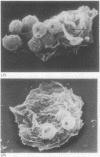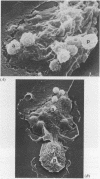Abstract
Phagocytic cells are believed to have an important role in the eradication of fungal spores from the lung. The ability of human and mouse cells to phagocytose the opportunistic fungus Aspergillus fumigatus has been examined, spores of the non-pathogenic fungus Penicillium ochrochloron being used for comparison. Most spores became associated with cells. Those of A fumigatus appeared to remain bound to the surface of the phagocyte rather than being ingested; in contrast, P ochrochloron spores appeared to be phagocytosed more readily, although they also were seen, in small numbers, o n the cell surface. In view of the subjective nature of these observations, the effects of spore diffusates on phagocytosis were examined. Diffusates from spores of A fumigatus were shown to inhibit phagocytosis of antibody coated radiolabelled sheep red blood cells by primed mouse phagocytic cells. Diffusates of spores of P ochrochloron had no such effect. These results suggest that when spores of A fumigatus become bound to the surface of phagocytes they are able to release a substance that inhibits their ingestion while having little or no effect on surface binding.
Full text
PDF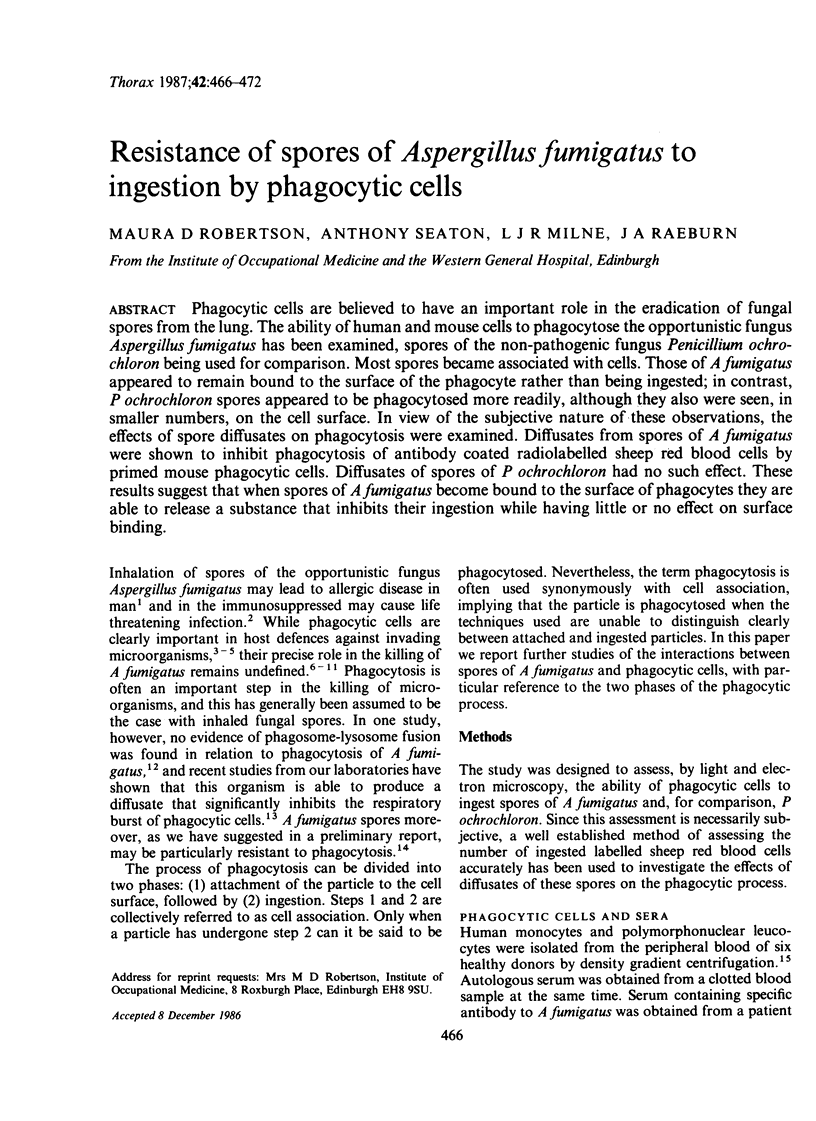
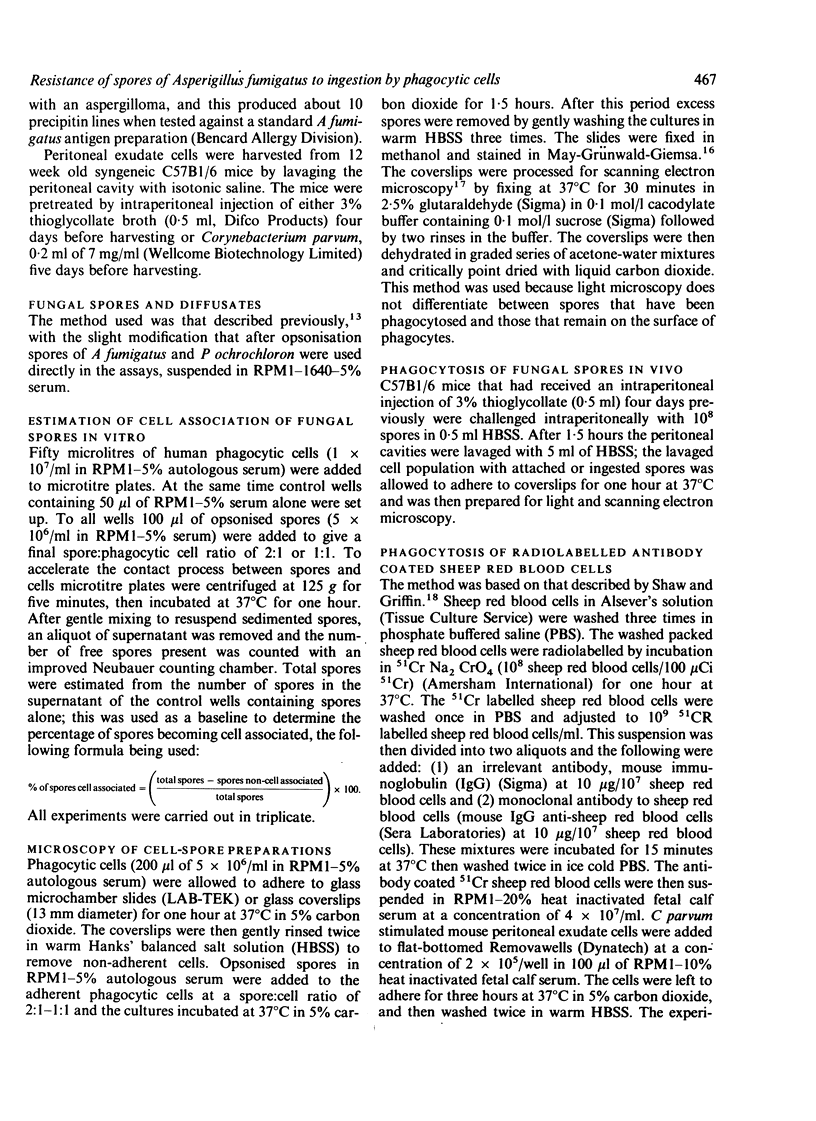
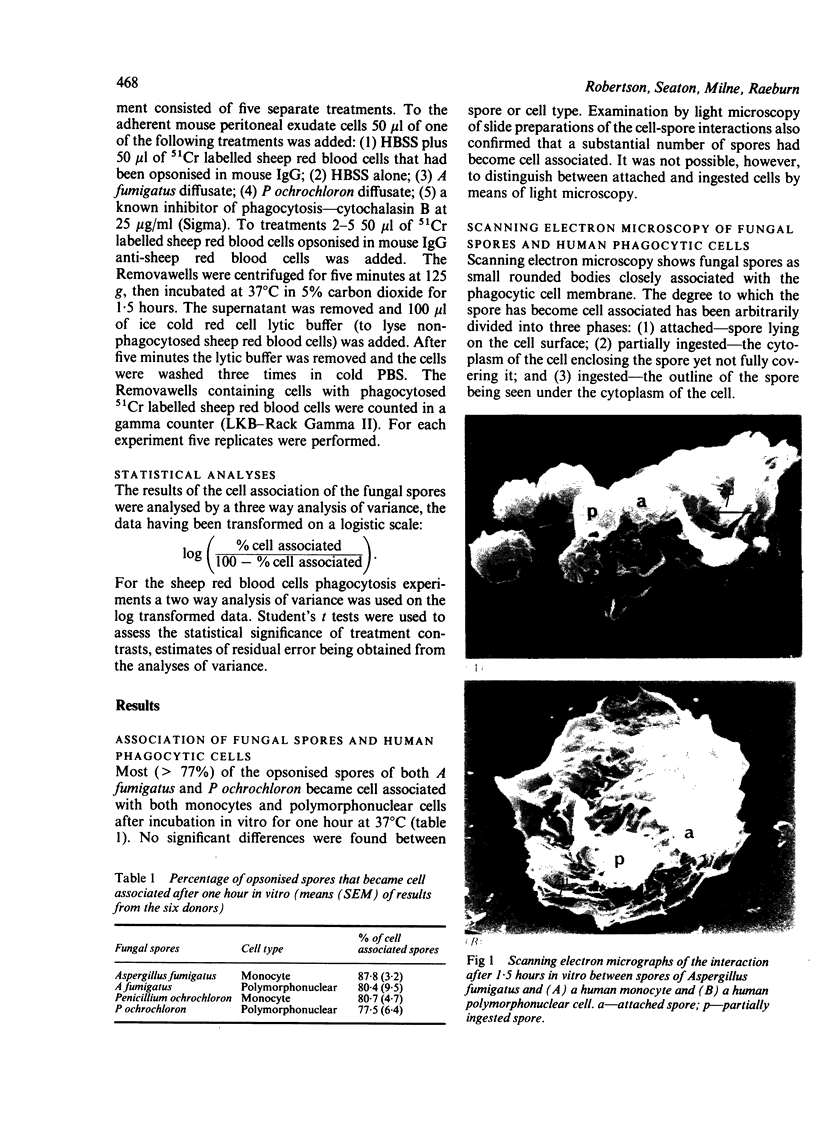
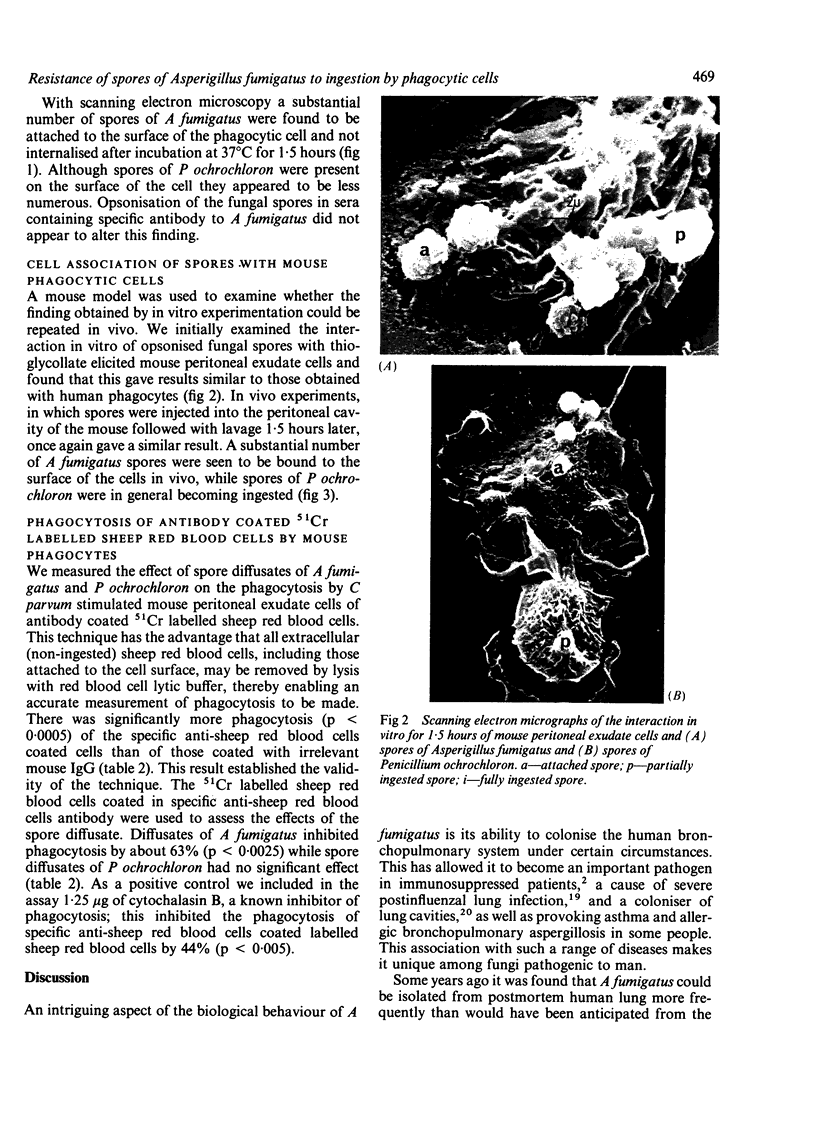
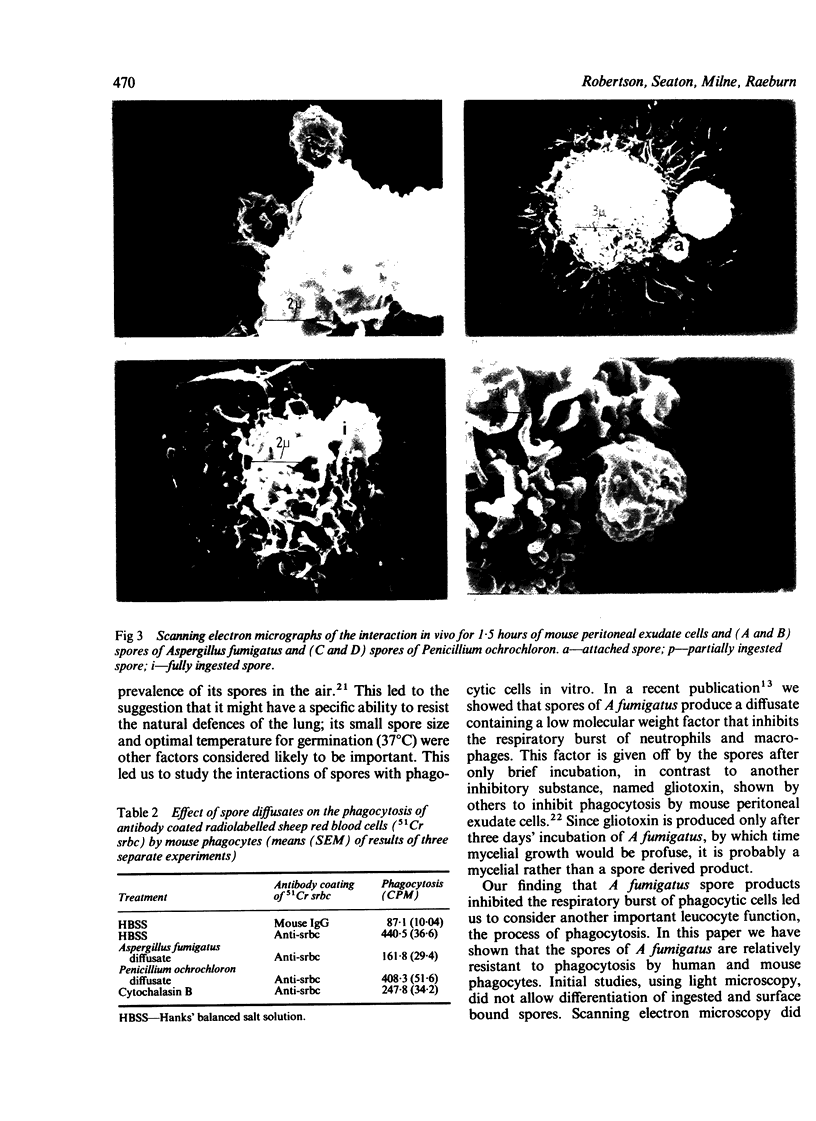
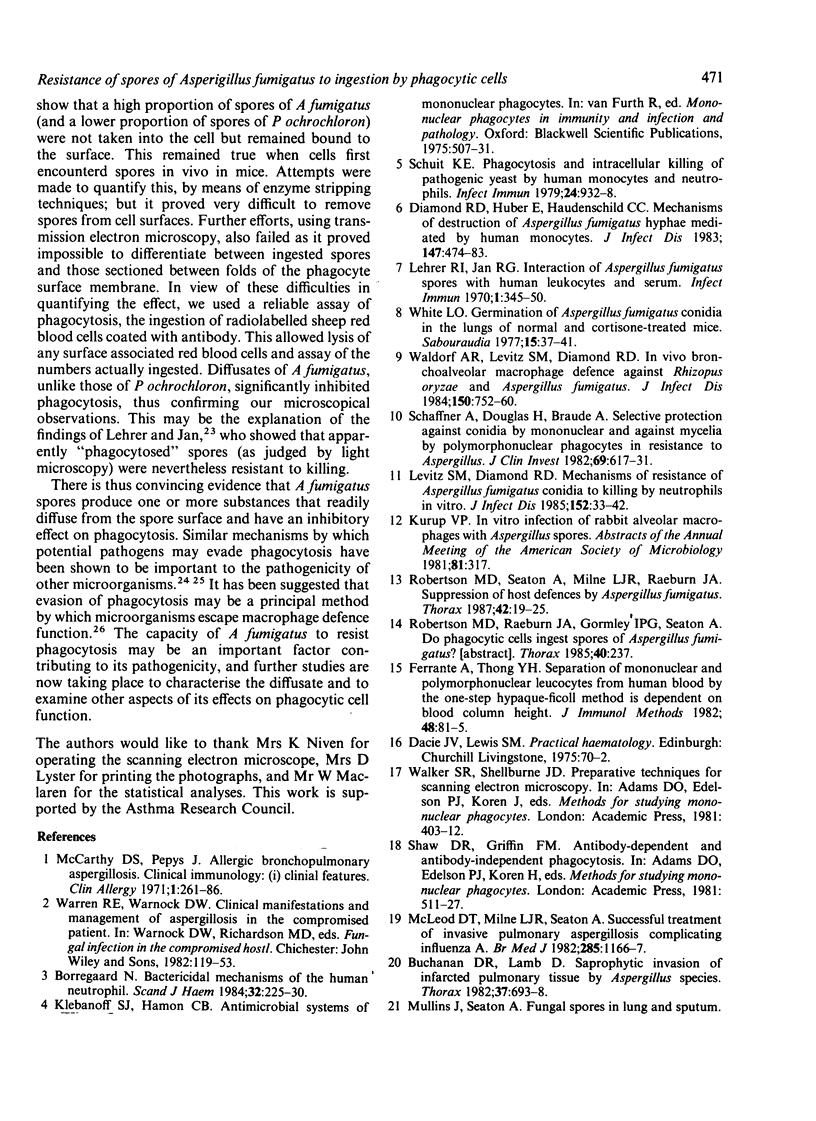
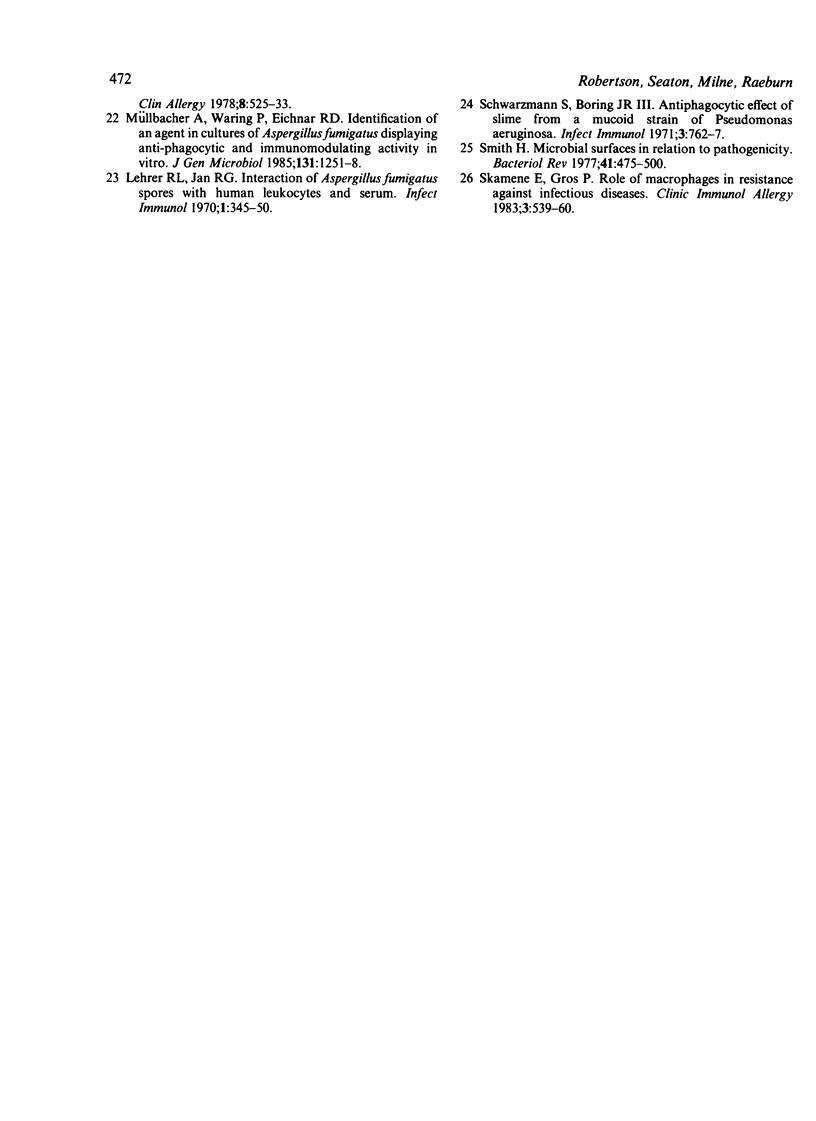
Images in this article
Selected References
These references are in PubMed. This may not be the complete list of references from this article.
- Borregaard N. Bactericidal mechanisms of the human neutrophil. An integrated biochemical and morphological model. Scand J Haematol. 1984 Mar;32(3):225–230. doi: 10.1111/j.1600-0609.1984.tb01685.x. [DOI] [PubMed] [Google Scholar]
- Buchanan D. R., Lamb D. Saprophytic invasion of infarcted pulmonary tissue by Aspergillus species. Thorax. 1982 Sep;37(9):693–698. doi: 10.1136/thx.37.9.693. [DOI] [PMC free article] [PubMed] [Google Scholar]
- Diamond R. D., Huber E., Haudenschild C. C. Mechanisms of destruction of Aspergillus fumigatus hyphae mediated by human monocytes. J Infect Dis. 1983 Mar;147(3):474–483. doi: 10.1093/infdis/147.3.474. [DOI] [PubMed] [Google Scholar]
- Ferrante A., Thong Y. H. Separation of mononuclear and polymorphonuclear leucocytes from human blood by the one-step Hypaque-Ficoll method is dependent on blood column height. J Immunol Methods. 1982;48(1):81–85. doi: 10.1016/0022-1759(82)90212-5. [DOI] [PubMed] [Google Scholar]
- Lehrer R. I., Jan R. G. Interaction of Aspergillus fumigatus Spores with Human Leukocytes and Serum. Infect Immun. 1970 Apr;1(4):345–350. doi: 10.1128/iai.1.4.345-350.1970. [DOI] [PMC free article] [PubMed] [Google Scholar]
- Lehrer R. I., Jan R. G. Interaction of Aspergillus fumigatus Spores with Human Leukocytes and Serum. Infect Immun. 1970 Apr;1(4):345–350. doi: 10.1128/iai.1.4.345-350.1970. [DOI] [PMC free article] [PubMed] [Google Scholar]
- Levitz S. M., Diamond R. D. Mechanisms of resistance of Aspergillus fumigatus Conidia to killing by neutrophils in vitro. J Infect Dis. 1985 Jul;152(1):33–42. doi: 10.1093/infdis/152.1.33. [DOI] [PubMed] [Google Scholar]
- McLeod D. T., Milne L. J., Seaton A. Successful treatment of invasive pulmonary aspergillosis complicating influenza A. Br Med J (Clin Res Ed) 1982 Oct 23;285(6349):1166–1167. doi: 10.1136/bmj.285.6349.1166-a. [DOI] [PMC free article] [PubMed] [Google Scholar]
- Müllbacher A., Waring P., Eichner R. D. Identification of an agent in cultures of Aspergillus fumigatus displaying anti-phagocytic and immunomodulating activity in vitro. J Gen Microbiol. 1985 May;131(5):1251–1258. doi: 10.1099/00221287-131-5-1251. [DOI] [PubMed] [Google Scholar]
- Robertson M. D., Seaton A., Milne L. J., Raeburn J. A. Suppression of host defences by Aspergillus fumigatus. Thorax. 1987 Jan;42(1):19–25. doi: 10.1136/thx.42.1.19. [DOI] [PMC free article] [PubMed] [Google Scholar]
- Schaffner A., Douglas H., Braude A. Selective protection against conidia by mononuclear and against mycelia by polymorphonuclear phagocytes in resistance to Aspergillus. Observations on these two lines of defense in vivo and in vitro with human and mouse phagocytes. J Clin Invest. 1982 Mar;69(3):617–631. doi: 10.1172/JCI110489. [DOI] [PMC free article] [PubMed] [Google Scholar]
- Schuit K. E. Phagocytosis and intracellular killing of pathogenic yeasts by human monocytes and neutrophils. Infect Immun. 1979 Jun;24(3):932–938. doi: 10.1128/iai.24.3.932-938.1979. [DOI] [PMC free article] [PubMed] [Google Scholar]
- Schwarzmann S., Boring J. R. Antiphagocytic Effect of Slime from a Mucoid Strain of Pseudomonas aeruginosa. Infect Immun. 1971 Jun;3(6):762–767. doi: 10.1128/iai.3.6.762-767.1971. [DOI] [PMC free article] [PubMed] [Google Scholar]
- Smith H. Microbial surfaces in relation to pathogenicity. Bacteriol Rev. 1977 Jun;41(2):475–500. doi: 10.1128/br.41.2.475-500.1977. [DOI] [PMC free article] [PubMed] [Google Scholar]
- Waldorf A. R., Levitz S. M., Diamond R. D. In vivo bronchoalveolar macrophage defense against Rhizopus oryzae and Aspergillus fumigatus. J Infect Dis. 1984 Nov;150(5):752–760. doi: 10.1093/infdis/150.5.752. [DOI] [PubMed] [Google Scholar]
- White L. O. Germination of Aspergillus fumigatus conidia in the lungs of normal and cortisone-treated mice. Sabouraudia. 1977 Mar;15(1):37–41. [PubMed] [Google Scholar]



